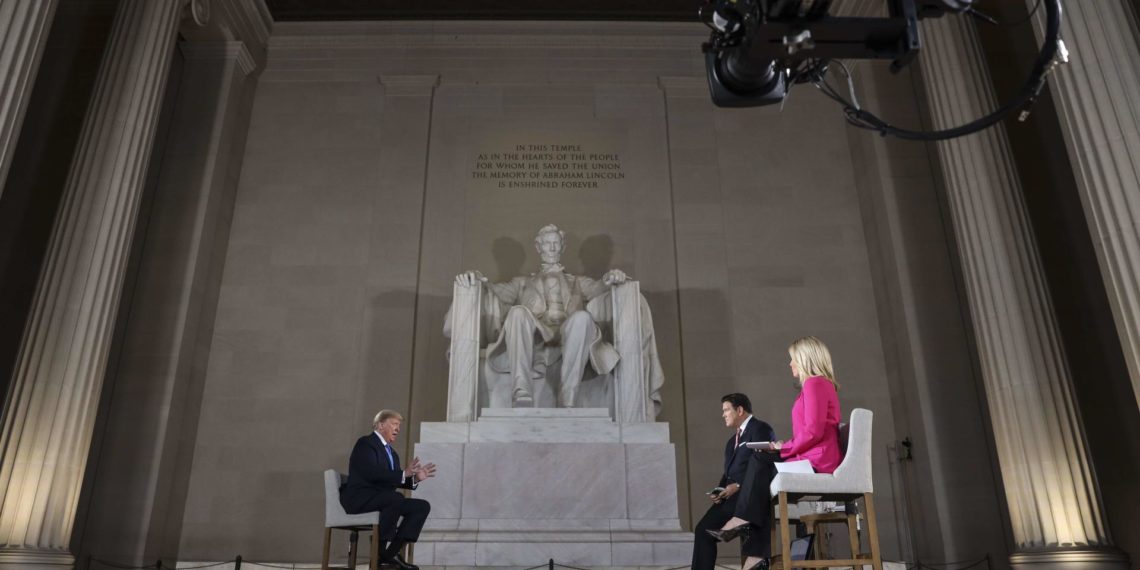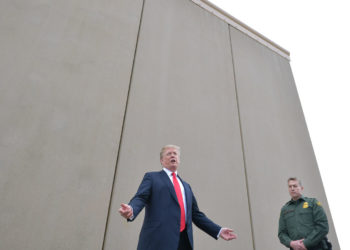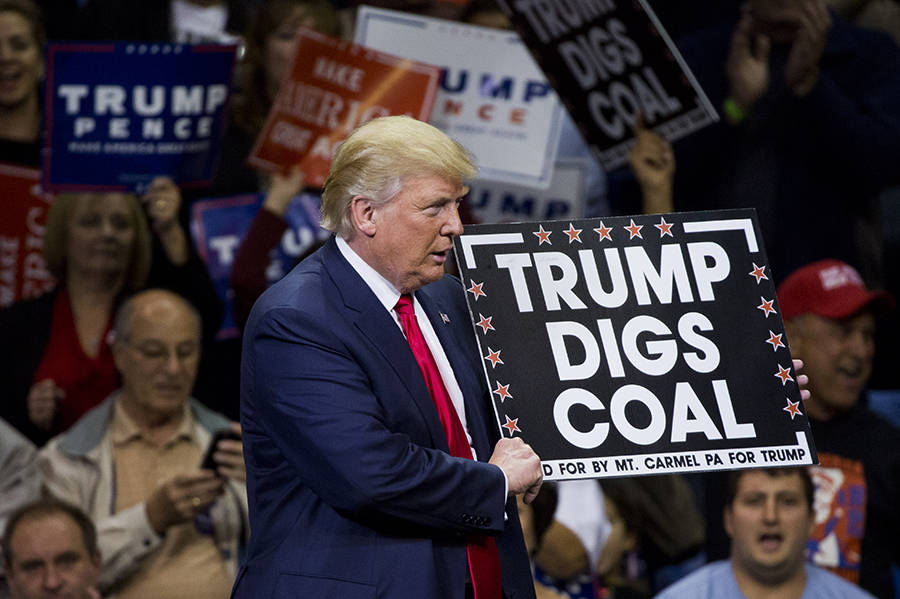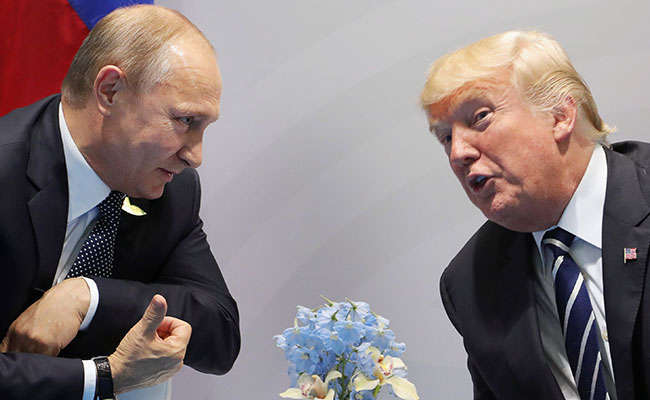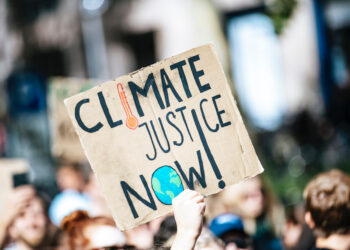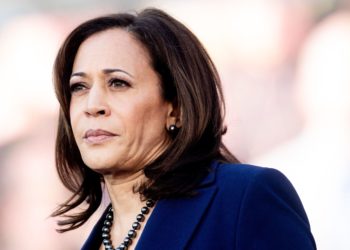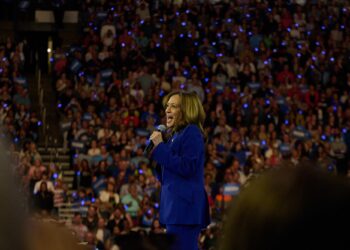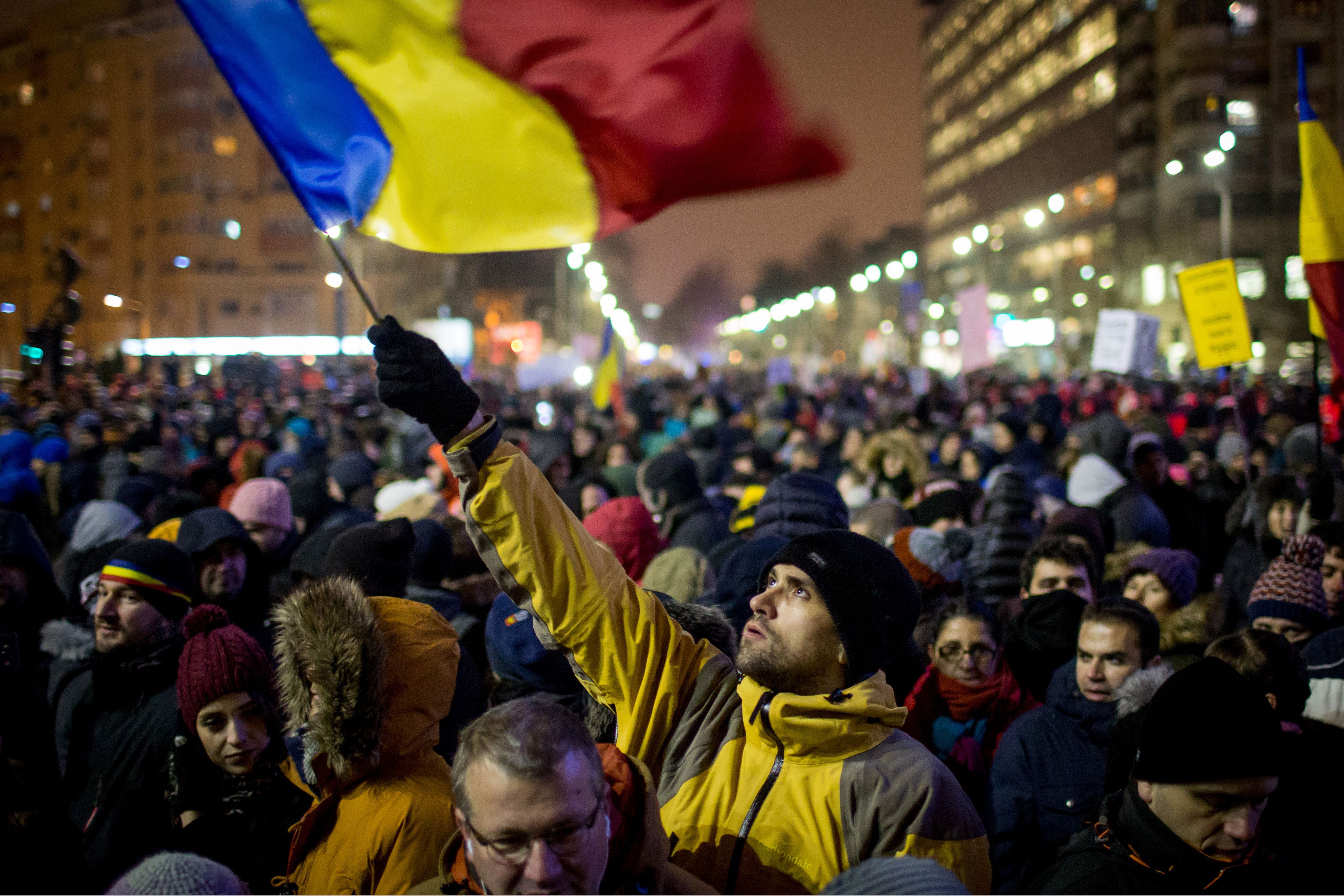On Sunday, May 3, Donald Trump appeared on a Fox News TV “town hall” staged inside the hallowed Lincoln Memorial in Washington, D.C. He used the opportunity to play the fiddle of victimhood, claiming that no other president had ever been treated with as much hostility by the press.
Pointing at the twenty-foot marble statue of Abraham Lincoln, Trump uttered, “The closest would be that gentleman right up there… I believe I am treated worse.”
Consistently ranked as America’s best president, Lincoln has often been the object of comparisons: with John F. Kennedy, who was also assassinated; more recently, with fellow Illinoian Barack Obama; and oddly enough with Trump.
Lincoln and Kennedy
The year was 1976, the U.S. was celebrating its Bicentennial, and my father decided that it was a good time for a family trip to Washington, D.C. I was sixteen years old. We enjoyed the monuments, museums, and ubiquitous stores crammed with patriotic souvenirs. A small cardboard with a Lincoln penny and a Kennedy half dollar drew my attention.
I still remember the coin set’s accompanying text. It listed similarities in the lives of Presidents Lincoln and Kennedy: they were first elected to Congress and 14 years later to the presidency exactly 100 years apart; both were northerners; Lincoln’s secretary was surnamed Kennedy and Kennedy’s Lincoln.
Both were shot in the head by southerners on a Friday. After fatally shooting Lincoln, John Wilkes Booth ran from a theater and was apprehended in a warehouse while Kennedy’s murderer fled from a warehouse to a theater. Lincoln and Kennedy were both succeeded by southern vice presidents named Johnson.
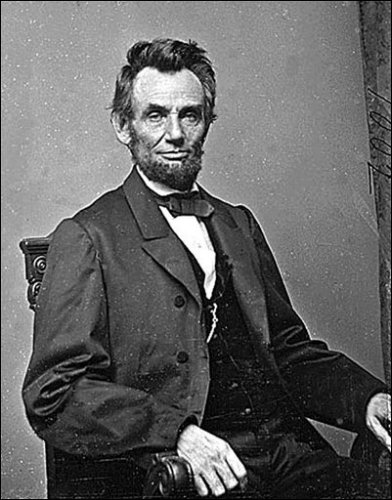
Wow! I am still amused by those facts. When I learned how to think and read like a historian, I came to understand that those parallels short of historical were merely coincidental factoids.
We can recognize, however, clusters of interconnected historical parallels. Lincoln and Kennedy were strong advocates of civil rights for blacks, positions that earned them wide opposition and animosity among many white voters, particularly in the South.
Both presidencies were haunted by clouds of illegitimacy, resulting from either narrow popular vote margins (Kennedy’s 0.17 percent) or the failure to receive a majority of the popular vote (Lincoln’s 38.9 percent). Lincoln failed to receive even a single vote in ten southern states.
The fact that Lincoln was a Republican and Kennedy a Democrat strengthens the historical parallels between them. The Republican Party in Lincoln’s age was far more progressive on most issues including human and civil rights than its Democratic counterpart, but today those ideological positions are inverted.
The electoral results of 1860 and 1960 fueled the rising crests of sectional animosities and partisan rancor, polarization, and violence. Lincoln’s election precipitated the secession of eleven southern states and a bloody 4-year long civil war. And while there was no domestic war during the 1960s, the decade saw a peak in political violence tied to the interconnected issues of civil rights and the Vietnam antiwar movement.
Lincoln and Obama
In 2008, 143 years after Lincoln’s assassination, Senator Obama was elected president. They are the only two politicians hailing from Illinois to have won the White House.
Political observers and commentators were quick to find parallels between both presidents. Lincoln and Obama were men of humble social origins who became lawyers. They launched their political careers in Illinois but had been born in other states. They entered politics as state legislators before running successfully for Congress.
Having served just two years in Congress, both decided to run for president as underdog candidates, eventually defeating more popular and experienced contenders, William Seward and Hillary Clinton, who coincidentally served at the time as U.S. Senators from New York. Expanding on these coincidences, Lincoln named Seward Secretary of State and Obama appointed Clinton to the same post.
Obama and Lincoln were master wordsmiths and gifted public speakers. These qualities were largely responsible for their widespread popularity and electoral support. Both, moreover, believed in and forcefully promoted civil rights and economic empowerment, particularly for African Americans.
Some parallels between Lincoln and Obama respond to conscious decisions of the latter, reflective of his profound admiration for the former. Obama emulated Lincoln. Let’s start with the symbolism of the inauguration ceremony. Obama chose to arrive in Washington by train, as Lincoln did. He took the oath of office with his left hand resting on Lincoln’s Bible. And later invoked “the better angels,” that Lincoln had summoned on his Inaugural Proclamation.
There are several contextual cluster parallels between the 16th and the 44th president. Both ran in contexts of profound political and party polarization, and while both were compromisers, their mere election further inflamed polarization, political rancor, and even political and racial violence.
Obama’s presidential legitimacy came under attack, not because of a narrow victory but because of widespread malicious rumors that he had been born in Kenya and therefore was an unlawful candidate and president. To this day, thousands of American voters hold on to the lie that he was not born in the United States.
While he was president, thank goodness, Obama did not see a single state break from the Union, he did not have to fight a civil war to restore the nation, and he was not gunned down. He faced, nonetheless, a parallel surge in sectional secessionism. Echoing the past, South Carolina led the way, with the formation of the neo-secessionist organization Third Palmetto Republic. Similar groups emerged in Texas, California, and Vermont.
Curiously, three months after Obama took office, Texas Governor Rick Perry conjured the specter of secession at a Tea Party rally. “We’ve got a great union,” he said, “there’s absolutely no reason to dissolve it. But if Washington continues to thumb their nose at the American people, who knows what may come of that.”
One can also read Republican congressional refusal to work with Obama and obstructionism as forms of secession. Republican Senate President Mitch McConnell rejected Obama’s olive branch and made it clear that his priority was to make him a one-term president.
During Obama’s two terms, there was no parallel to guerilla war in Bleeding Kansas (1855-1856) nor John Brown’s raid on the federal armory at Harper’s Ferry (1859), but those years saw a dramatic rise in hate crimes and racial violence. Incidents of random and institutionalized violence against blacks became commonplace.
While Obama was not assassinated, large numbers of Americans hated him to death, and many still do.
Lincoln and Trump
Halt for a minute. Imagine that you are watching an episode of Sesame Street. The images of Lincoln, Kennedy, Obama, and Trump pop up on the screen as Ernie begins to sing his signature song:
One of these things is not like the others
One of these things just doesn’t belong
Can you tell which thing is not like the others
By the time I finish my song?
Anyone with just the most basic knowledge of presidential history or a minimal amount of common sense would respond with “Trump.”
Yet in 2018, the Ivy League-educated conservative author Dinesh D’Souza released his film Death of a Nation: Can We Save America a Second Time? in which he sought to established historical parallels between Lincoln and Trump, who two months earlier had pardoned him for making illegal campaign contributions.
The film is a stream of intentional distortions, fake history at its best. As during the late antebellum, the film goes, Pre-Trump America was dead – at least agonizing – in both cases because of racist Democrats who wanted to destroy the nation.
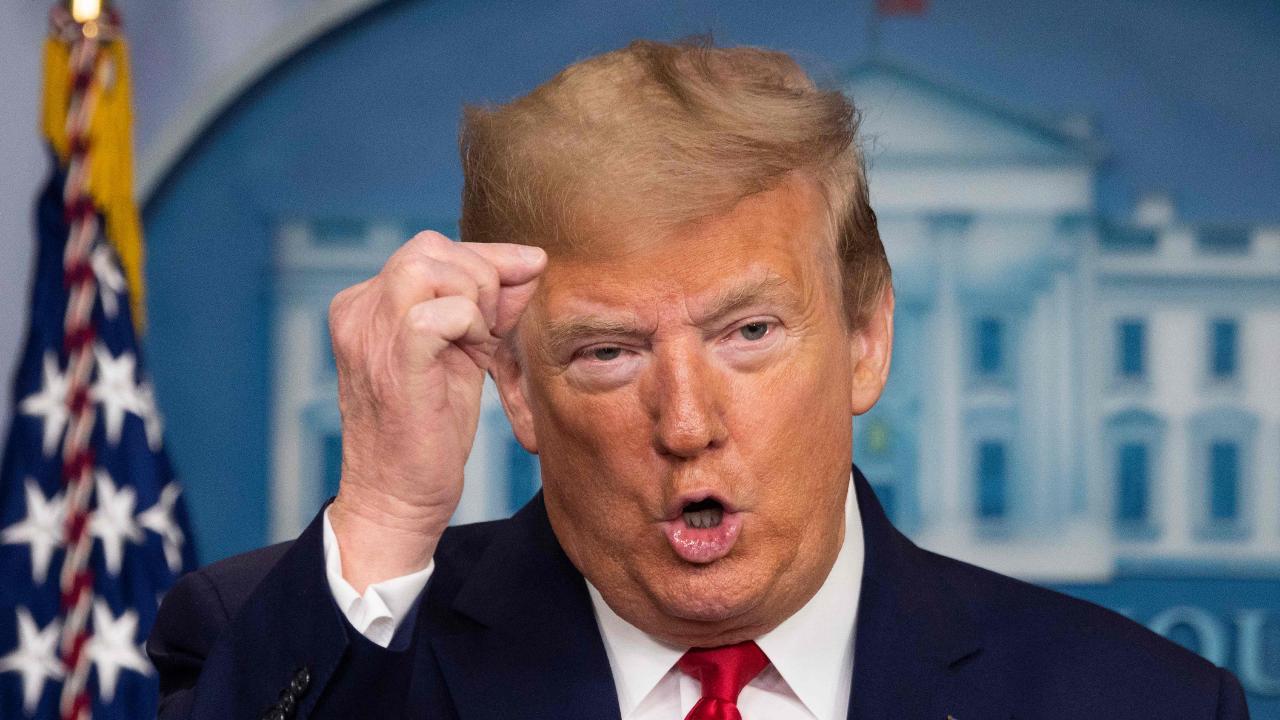
Completely ignoring the political inversion whereby the Democrats are now the most liberal and progressive and Republicans have embraced ultraconservative positions, D’Souza establishes parallels between two Republican presidents victimized by Democratic politicians, who operated in fascist fashion.
Numerous critics place Death of a Nation among the worst films ever. I see it as one of the most dishonest.
D’Souza knows better. But he is also aware that the average American is woefully ignorant about U.S. history and even the nation’s foundational jewels, the Declaration of Independence and the Constitution.
A national survey released on the 150th anniversary of Lincoln’s assassination demonstrated that half of all Americans did not know when the Civil War took place. College graduates did not do much better, with one-third incapable of dating America’s deadliest conflagration.
Let’s halt for a minute one more time to play another children’s game. Look at the photograph of Trump under Lincoln’s statue and find seven differences. Better yet, seventy, seven hundred, seven thousand…
Disclaimer: The views and opinions expressed here are those of the author and do not necessarily reflect the editorial position of The Globe Post.

